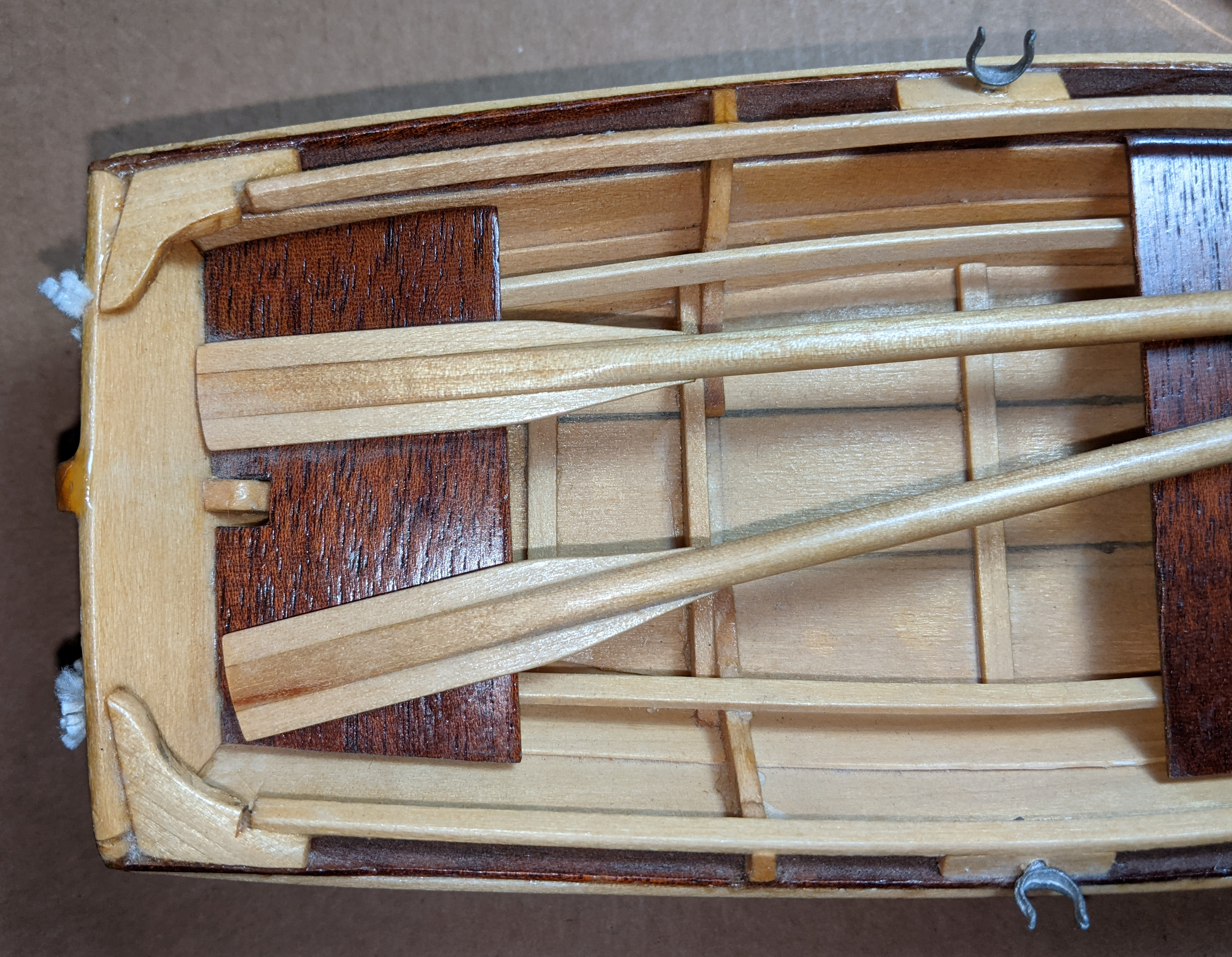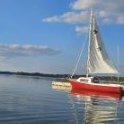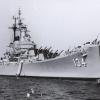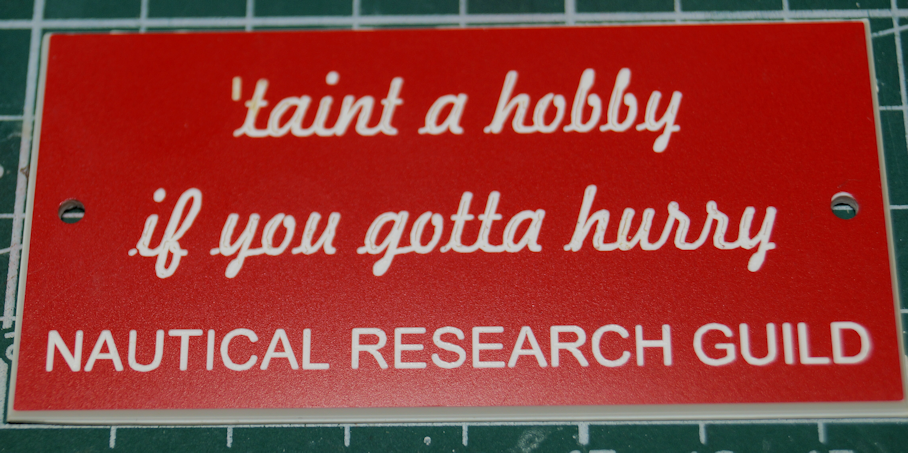-
Posts
905 -
Joined
-
Last visited
About robert952

- Birthday 09/27/1952
Profile Information
-
Gender
Male
-
Location
Aberdeen, North Carolina, USA
-
Interests
American Civil War era ironclads, small work boats, nautical history. Other: 3D CGI (still images) and too much game playing on the PC.
Recent Profile Visitors
-
 robert952 reacted to a post in a topic:
Muscongus Bay Lobster Smack by Kenchington - Model Shipways - 1:24
robert952 reacted to a post in a topic:
Muscongus Bay Lobster Smack by Kenchington - Model Shipways - 1:24
-
 robert952 reacted to a post in a topic:
Norwegian Sailing Pram by Taken Aback - Model Shipways - 1:12
robert952 reacted to a post in a topic:
Norwegian Sailing Pram by Taken Aback - Model Shipways - 1:12
-
 robert952 reacted to a post in a topic:
Norwegian Sailing Pram by Taken Aback - Model Shipways - 1:12
robert952 reacted to a post in a topic:
Norwegian Sailing Pram by Taken Aback - Model Shipways - 1:12
-
 robert952 reacted to a post in a topic:
Norwegian Sailing Pram by Taken Aback - Model Shipways - 1:12
robert952 reacted to a post in a topic:
Norwegian Sailing Pram by Taken Aback - Model Shipways - 1:12
-
 robert952 reacted to a post in a topic:
Friendship Sloop by gsdpic - FINISHED - BlueJacket Shipcrafters - 1:12
robert952 reacted to a post in a topic:
Friendship Sloop by gsdpic - FINISHED - BlueJacket Shipcrafters - 1:12
-
 robert952 reacted to a post in a topic:
Friendship Sloop by gsdpic - FINISHED - BlueJacket Shipcrafters - 1:12
robert952 reacted to a post in a topic:
Friendship Sloop by gsdpic - FINISHED - BlueJacket Shipcrafters - 1:12
-
 robert952 reacted to a post in a topic:
Friendship Sloop by gsdpic - FINISHED - BlueJacket Shipcrafters - 1:12
robert952 reacted to a post in a topic:
Friendship Sloop by gsdpic - FINISHED - BlueJacket Shipcrafters - 1:12
-
 robert952 reacted to a post in a topic:
Friendship Sloop by gsdpic - FINISHED - BlueJacket Shipcrafters - 1:12
robert952 reacted to a post in a topic:
Friendship Sloop by gsdpic - FINISHED - BlueJacket Shipcrafters - 1:12
-
 robert952 reacted to a post in a topic:
Friendship Sloop by gsdpic - FINISHED - BlueJacket Shipcrafters - 1:12
robert952 reacted to a post in a topic:
Friendship Sloop by gsdpic - FINISHED - BlueJacket Shipcrafters - 1:12
-
 RVB reacted to a post in a topic:
Friendship Sloop by gsdpic - FINISHED - BlueJacket Shipcrafters - 1:12
RVB reacted to a post in a topic:
Friendship Sloop by gsdpic - FINISHED - BlueJacket Shipcrafters - 1:12
-
 Rock_From_Korea reacted to a post in a topic:
Golden Hind by Rock_From_Korea - 1:48
Rock_From_Korea reacted to a post in a topic:
Golden Hind by Rock_From_Korea - 1:48
-
 MtZigg reacted to a post in a topic:
Norwegian sailing pram by Kenchington– FINISHED – Model Shipways – 1:12
MtZigg reacted to a post in a topic:
Norwegian sailing pram by Kenchington– FINISHED – Model Shipways – 1:12
-
I go back to the basic concept of what is of interest to me. I temper that with a bit of what will I learn or get better at skill set-wise. I won't be surprised if I pick out a non-ship model plastic model (or even metal) in the future as variety is the spice of life. I know I need to relearn and improve my plastic assembly, detailing and painting skills. So, that may be in my future, too.
-
 Tecko reacted to a post in a topic:
Work area pictures only
Tecko reacted to a post in a topic:
Work area pictures only
-
 Taken Aback reacted to a post in a topic:
Norwegian sailing pram by Kenchington– FINISHED – Model Shipways – 1:12
Taken Aback reacted to a post in a topic:
Norwegian sailing pram by Kenchington– FINISHED – Model Shipways – 1:12
-
 Ryland Craze reacted to a post in a topic:
Getting Started: From Dollhouses to the USS Constitution
Ryland Craze reacted to a post in a topic:
Getting Started: From Dollhouses to the USS Constitution
-
 vvvjames reacted to a post in a topic:
Getting Started: From Dollhouses to the USS Constitution
vvvjames reacted to a post in a topic:
Getting Started: From Dollhouses to the USS Constitution
-
 Keith Black reacted to a post in a topic:
Getting Started: From Dollhouses to the USS Constitution
Keith Black reacted to a post in a topic:
Getting Started: From Dollhouses to the USS Constitution
-
 JacquesCousteau reacted to a post in a topic:
Grand Banks Dory by EGL - Model Shipways - 1:24
JacquesCousteau reacted to a post in a topic:
Grand Banks Dory by EGL - Model Shipways - 1:24
-
 GrandpaPhil reacted to a post in a topic:
Grand Banks Dory by EGL - Model Shipways - 1:24
GrandpaPhil reacted to a post in a topic:
Grand Banks Dory by EGL - Model Shipways - 1:24
-

Getting Started: From Dollhouses to the USS Constitution
robert952 replied to Jasennord's topic in New member Introductions
Welcome to the madness of MSW. Your tale is similar to mine. I still have a skelton hull about half-way planked of the Golden Hinde from Mamoli. I enjoyed what I did and what I learned from that work, but realize I had to get some of the basics under my belt. Start a log on your build. You'll find a lot of people who like to learn from others and share their experiences and expertise. (From me, you get more of the former than the latter.) Have fun. And remember: -
This is looking good. Yep...learning process continues with every build. Yep...every kit has some 'anomaly' that doesn't show up until you assemble it. And you probably will notice the errors more than a lot of other people when the project is complete. We tend to be harder on our own critique of our work. However, you are doing (IMHO) the correct procedure: Keep Calm and Carry On. And as a QA manager told me what they did on the factory floor: File to fit. Hammer to adjust. Paint to Hide.
-
Great looking model. I'm looking forward to the rest of your build log and your next build.
- 167 replies
-
- Norwegian Sailing Pram
- Model Shipways
-
(and 1 more)
Tagged with:
-
I read through your log again and I may have overlooked whether you beveled each plank as you added them. Like you, I soaked the plank and clamped it in place overnight. I left them a bit long so I could cut to size. Keep in mind that my method here is based on upside down hull. So top and bottom is relative to that position. The top of the previously installed plank is left untouched. After next plank dried I put a slight bevel on the bottom edge of the next plank. It was just enough to allow the plank to fit flush on the lower plank and to the frame. I think that helps avoid the clinker effect. I also beveled the planks on each end a bit to fit to stem posts. I was careful to mark stern and bow on each plank since they were 'custom fit.' Finally, I beveled the backside (closest to the bulkheads) of each plank (as you did) to fit to the posts. Entry #6 of my build has some pictures that may help. As for gluing the bilge area, I did like you and used a lot of rubber bands. I also put a piece of wood under the building base to keep the rubber bands tight to the form. It is a tedious job to shape those planks to size. My results weren't pretty. I had to cut some filler pieces. From the beginning as I put the planks on I knew I'd be doing a lot of filling and sanding. (No matter how new the blade on my knife, I couldn't keep the cuts neat.) Entry 15 of my build log shows the ugly details. (However, filler and sanding made it look better.) I think the kit is rated at the proper skill level of 2. Over the years I have seen similar definitions as those that appear on this kit defining the skill level requiring cutting and shaping of wood. When I began working in wood, I started on a model of The Golden Hinde. Like a lot of beginners, I (finally) figured out I needed to learn some basics. A lot of modelers quit at this point. I (luckily) found MSW and read through a LOT of posts. That encouraged me to keep on trying. So, I got a Level 1 kit and built it in a weekend. I figured Level 2 would be the next step. But I found, as you did, it's still a challenge. (And I added more challenge by modifying my build with a keel and sail.) Now whether this should be the second or fourth model someone builds is a personal call. I feel each model we build should offer some kind of challenge. When I look at a model, it's hard (for me at least) to deterimine if my skills are up to snuff. However, I know it's going to be a learning experience. With all that said, I am impressed with how your build is going. You have overcome the challenges very well. So, don't be too hard on yourself. In some areas I wish my build looked as good as yours at the same point. As to 'plunging in for hours,' you'll probably get there. My wife was working a late shift and usually got off about 1AM. Sometimes she'd get off early. I was working on a plastic model one night. I started about 7:30ish. The model was fitting togther well. I was moving along in the process. I heard the door open. I yelled out, "Things slow at work tonight?" figuring she got off early. She said, "Are you alright?" I relied, "Yeah, why?" "Do you know it's almost 2 AM?" Uhhhh...nope. I guess I had made the plunge.
- 24 replies
-
- maine peapod
- midwest products
-
(and 1 more)
Tagged with:
-
Thanks for the link and caveat.
- 90 replies
-
- Friendship Sloop
- bluejacket shipcrafters
-
(and 1 more)
Tagged with:
-
I like the vise/clamp you use. Where can I buy one (or two)?
- 90 replies
-
- Friendship Sloop
- bluejacket shipcrafters
-
(and 1 more)
Tagged with:
-
This seems to be a great model to start on for a first build. Don't be afraid to ask questions. Ships are a bit different that Gundam. 😁 Good Luck.
- 32 replies
-
- Dory
- Lowell Grand Banks Dory
- (and 4 more)
-
Sitting on the dock of the bay, watching this build on the way. I like watching the smaller builds.
- 18 replies
-
- muscongus bay lobster smack
- Model Shipways
-
(and 1 more)
Tagged with:
-
@JacquesCousteau Thanks. Lots of photos and art works and various modeling sites too. The choices and inspiration won''t be the problem. Deciding how to go will be the challenge. @Bryan Woods Except that Ihave too much invested in this new house and yard, I probably would. However, lawnwork and gardening run in my genes. My Dad (in his 90s) works daily and has an beautiful lawn. @Desertanimal Thanks for the well wishes. I feel I am still feeling my way around to find my true interest. I do like the small boats and may gravitate towards those. However, I have some large models/ships in my stash. They still pique my interest.
- 44 replies
-
- maine peapod
- peapod
-
(and 4 more)
Tagged with:
-
For now I am calling this an 'non-build log.' I didn't realize how long it has been since I posted (January, 18!!!). But there's nothing to update per se on the build. Lots of RL excuses: major yard work, getting contractor to build fence, staining same, and a couple of similar projects that took me up to April. Then RL decided to throw me a curve and introduce me to lower lumbar back pain in early-May. Without the details: I can't sit for long periods of time except in my recliner with various pain management stuff. After visiting four doctors to cover my options, I am scheduled for surgery in mid-October. Hopefully, a few weeks after that I can return to 'active duty.' That said, I haven't been completely ignoring the project. While in my recliner I have been researching gaff sails and rigging, pintles (of sorts), making sails, rudders, reviewing air brush techniques and weathering techinques. Lots of reading of logs here on similar small boat builds and these subject matters. I even did a couple of 'test runs on stuff.' I'll cover that later when I get back to the build. I have also been making plans for a future project with a dory kit a friend gave me. One of my first completed wood models was the same kit. The kit is a basic kit (level 2). But as I pointed out early in this log, I believe that simple kits provide an opportunity to challenge builders with changes to the basic model or a vision of a different techinque for the build or display. On this next build of the dory, I plan to do a 'diorama' of sorts. I will weather the boat and (current plan - subject to change) have it tied to a weathered dock set in some form of expoxy 'water' shoreline. So, I have lots of videos in my faves on a whole bunch of stuff related to weathering, creating water, even model train terrain making. I also found what I think will be a suitable display base. Again-subject to change. Just making plans and looking at options. So, I am not abandoning the build. I just have to get some things fixed healthwise. I felt I needed to let the world know I am around. Maybe not kicking much. And to let those following, this project is not abandoned.
- 44 replies
-
- maine peapod
- peapod
-
(and 4 more)
Tagged with:
-
Following along. Good start. (You reminded me I need to update my 'un-build' log.)
- 24 replies
-
- maine peapod
- midwest products
-
(and 1 more)
Tagged with:
-

Work area pictures only
robert952 replied to Johnny Mike's topic in Modeling tools and Workshop Equipment
@DerekMc It also looks like you have quite a store room for your stash. -

Work area pictures only
robert952 replied to Johnny Mike's topic in Modeling tools and Workshop Equipment
@Dave_E A very ecclectic collection of items in your work area: Lava lamp, Greek vase (well it looks Greek), Tommy Emmanuel poster (great entertainer - seen him in concert a couple of times), etc.
About us
Modelshipworld - Advancing Ship Modeling through Research
SSL Secured
Your security is important for us so this Website is SSL-Secured
NRG Mailing Address
Nautical Research Guild
237 South Lincoln Street
Westmont IL, 60559-1917
Model Ship World ® and the MSW logo are Registered Trademarks, and belong to the Nautical Research Guild (United States Patent and Trademark Office: No. 6,929,264 & No. 6,929,274, registered Dec. 20, 2022)
Helpful Links
About the NRG
If you enjoy building ship models that are historically accurate as well as beautiful, then The Nautical Research Guild (NRG) is just right for you.
The Guild is a non-profit educational organization whose mission is to “Advance Ship Modeling Through Research”. We provide support to our members in their efforts to raise the quality of their model ships.
The Nautical Research Guild has published our world-renowned quarterly magazine, The Nautical Research Journal, since 1955. The pages of the Journal are full of articles by accomplished ship modelers who show you how they create those exquisite details on their models, and by maritime historians who show you the correct details to build. The Journal is available in both print and digital editions. Go to the NRG web site (www.thenrg.org) to download a complimentary digital copy of the Journal. The NRG also publishes plan sets, books and compilations of back issues of the Journal and the former Ships in Scale and Model Ship Builder magazines.









